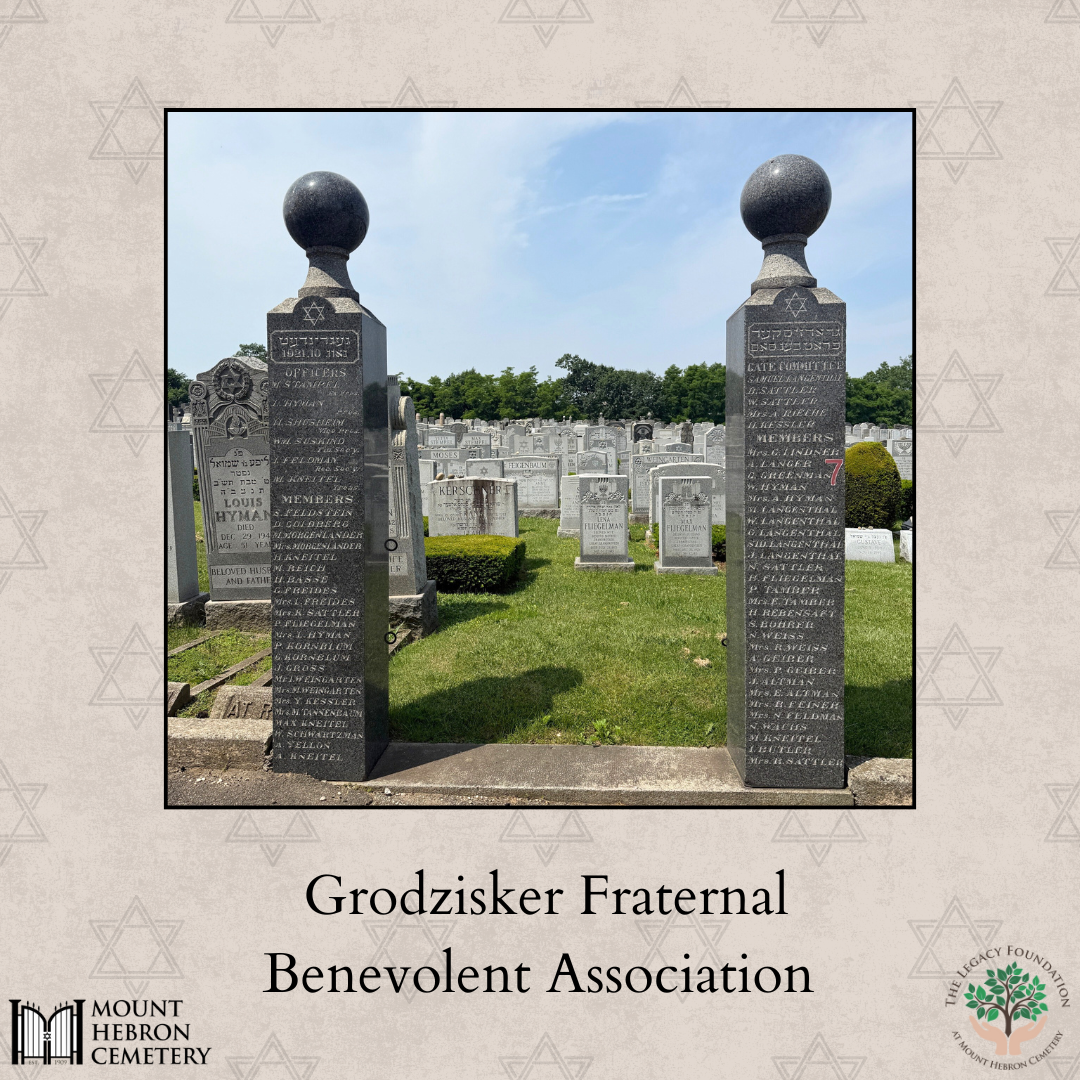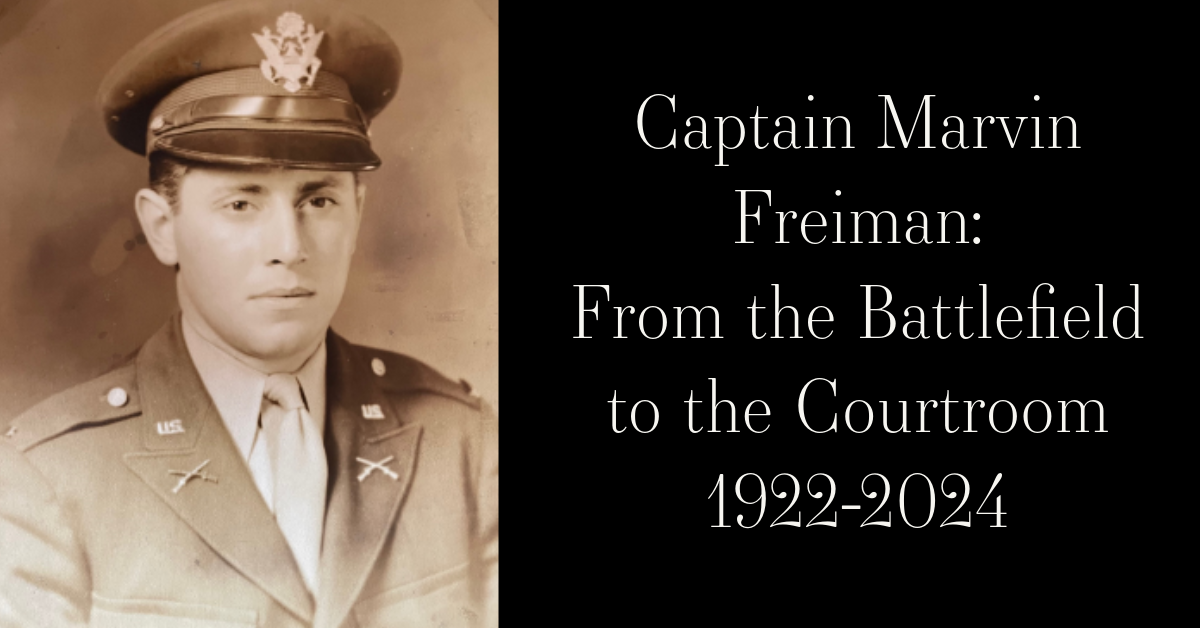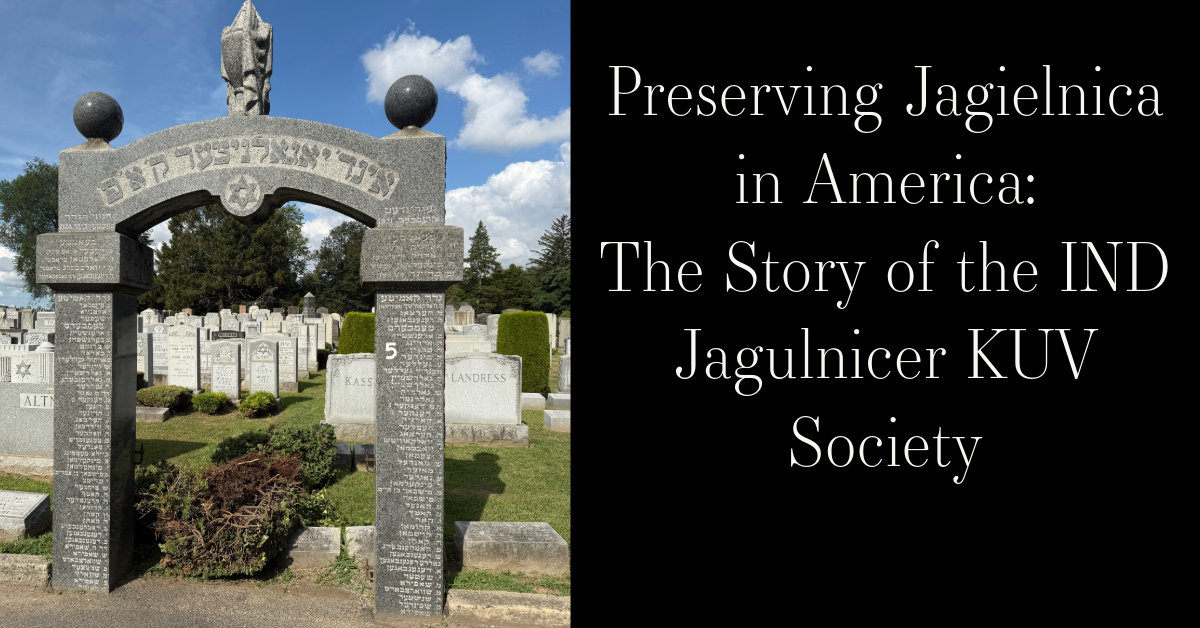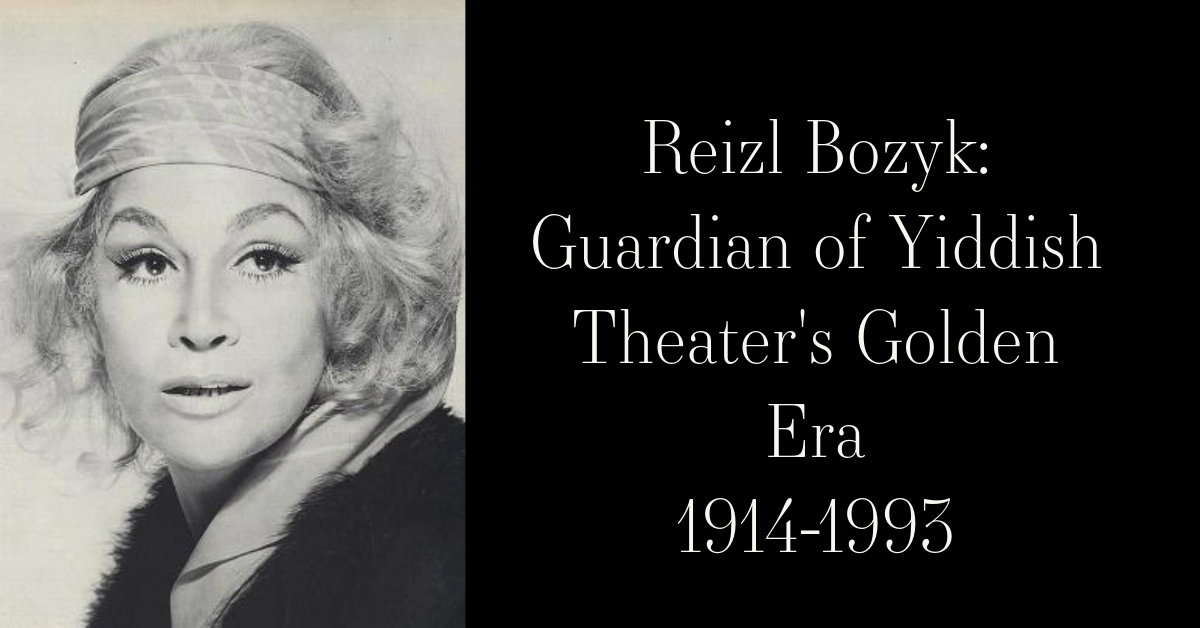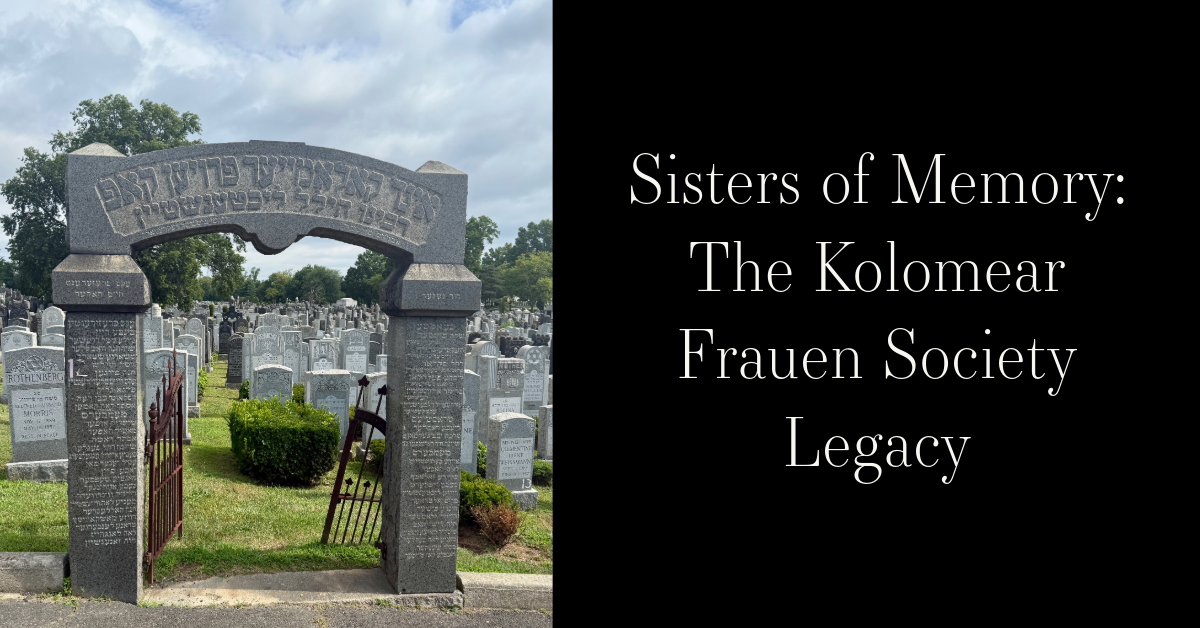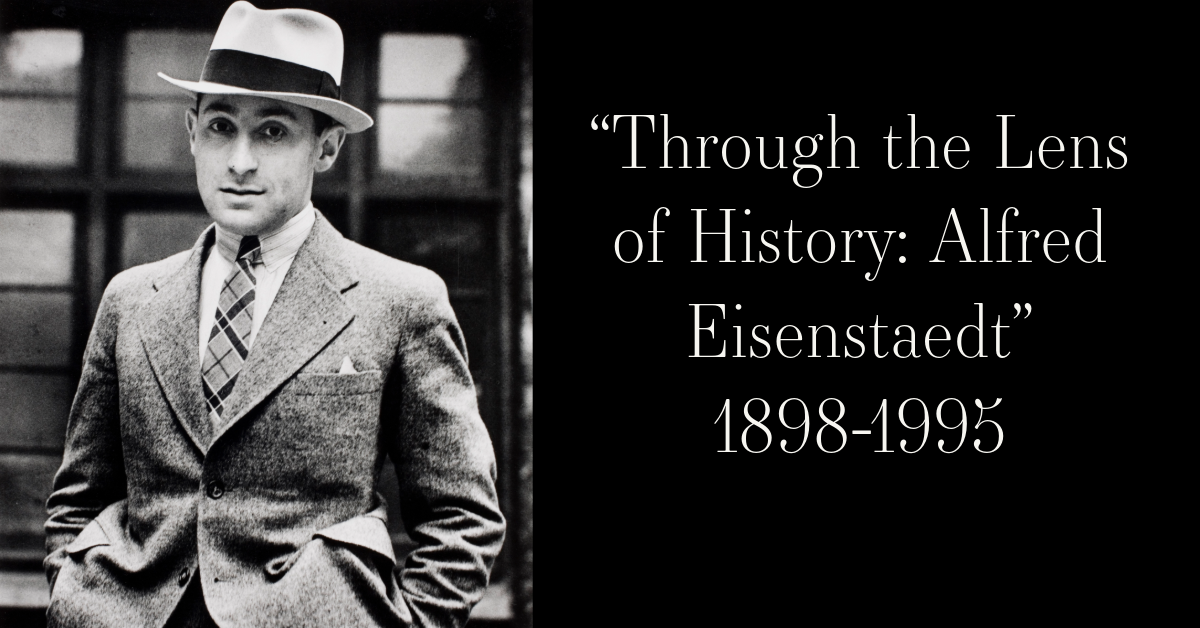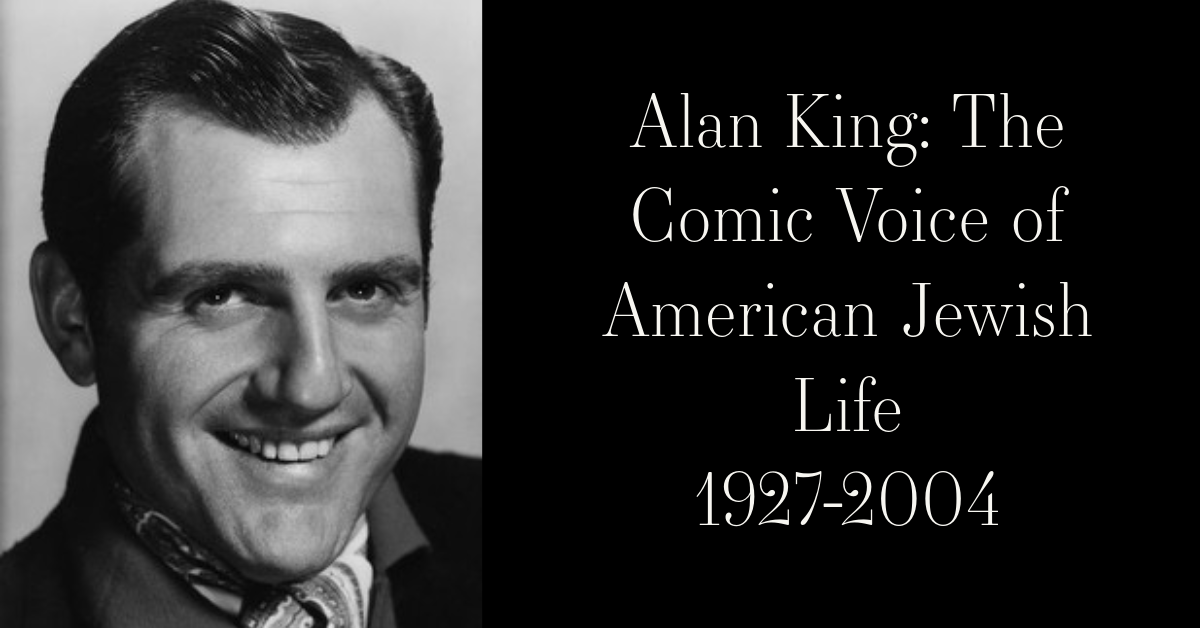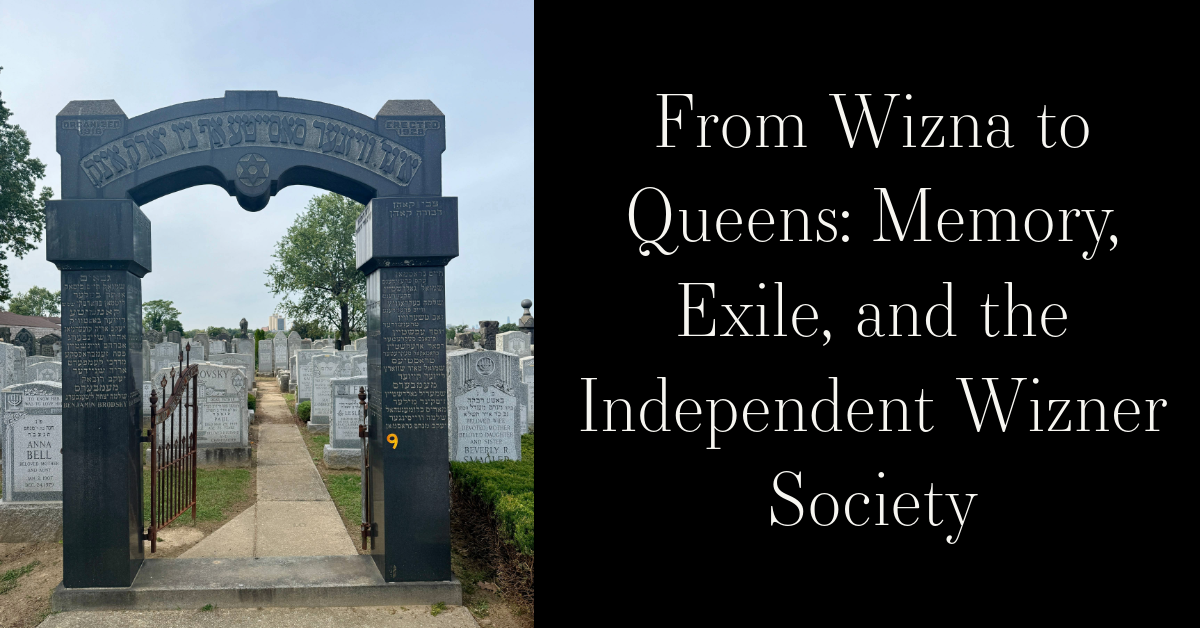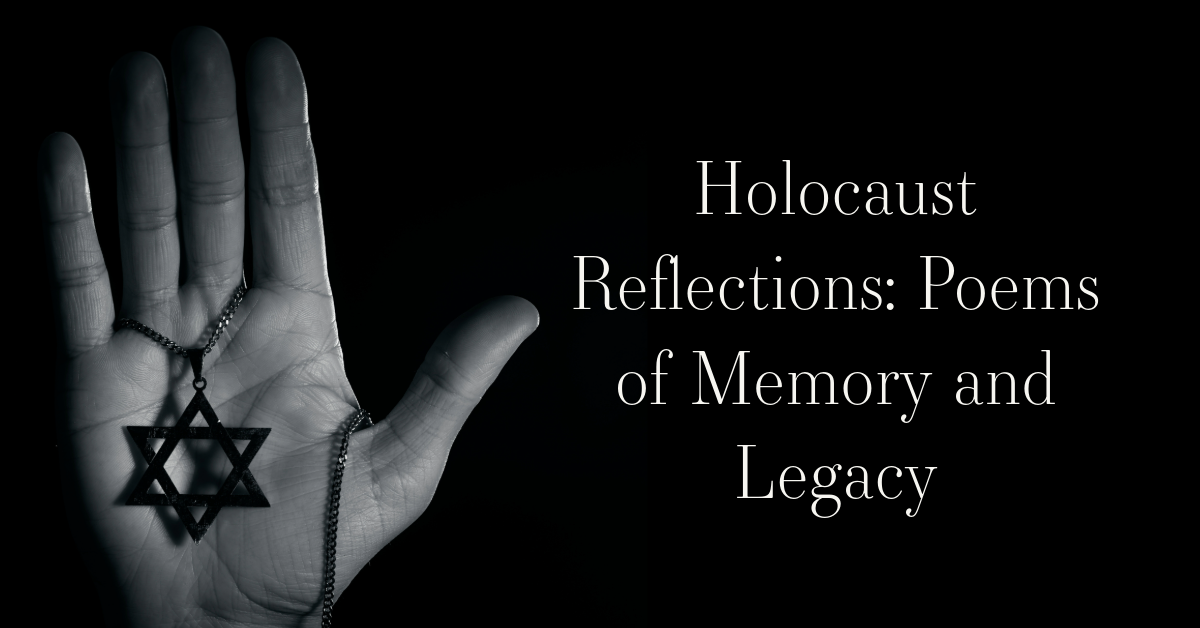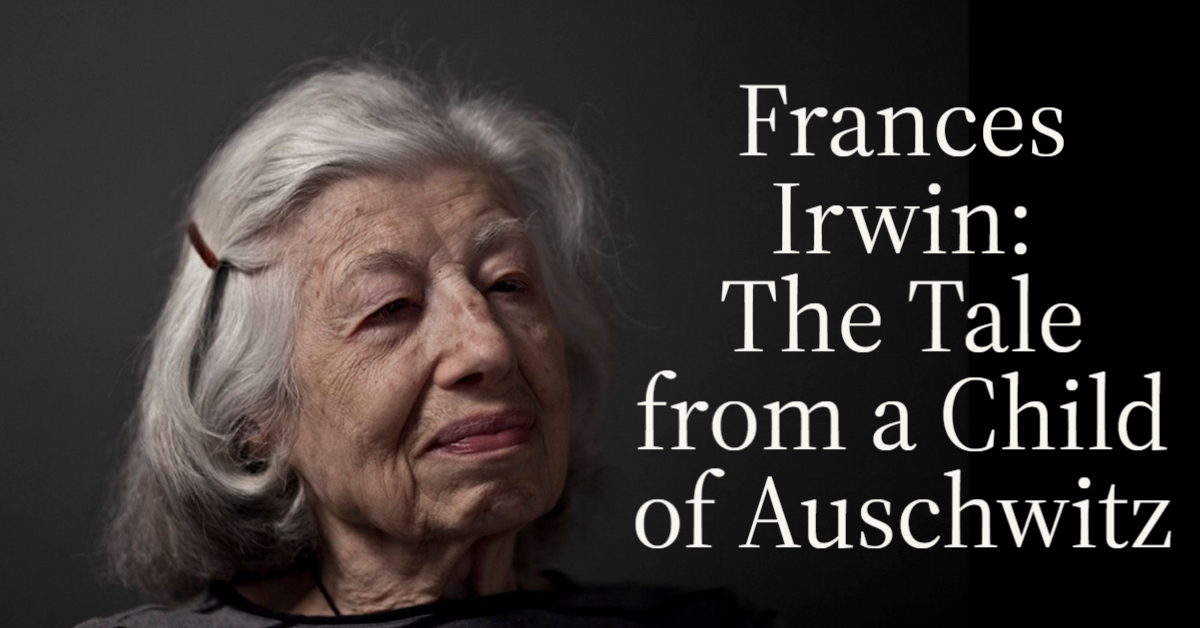Story Summary:
The Grodzisker Fraternal Society was established in New York by immigrants hailing from Grodzisk Mazowiecki, Poland. An independent Jewish community was recognized in Grodzisk by the 18th century, with its people engaging in trade and crafts, and establishing religious and education institutions. They also maintained their own cemetery and synagogue. Most of Grodzisk's Jewish community perished in the Holocaust, with about 125 returning after the war but migrating shortly after. Commemoration events, the work of archivists and researchers, as well as the victim's descendents are all proof that the memories of Grodzisk's Jewish community are still alive. ~Blog by Olivia Scanlon
Grodzisker Fraternal Blog
The Grodzisker Fraternal Society was established in New York by immigrants hailing from Grodzisk Mazowiecki, Poland. Initial Jewish presence dates to the late 16th century but an organized independent Jewish community is more clearly recognized in the 18th century, with there being about 150 Jews residing in Grodzisk. Following the Third Partition of Poland, Jews were encouraged to move from the countryside to the towns/cities. The population increased steadily, amounting to over 2000 Jews by the late 19th century, and over 3000 by the 20th century.
Jan Klemens, the local parish priest, allowed the local Jews to establish a cemetery and a house of prayer. Jews were further permitted to engage in the local trade and craft professions. The 19th century brought the construction of a new synagogue and multiple Jewish religious schools in addition to a community-funded elementary school. The Shapiro’s court and school were later established, after Tzaddik Elimelech Shapiro (son of the founder of the Molgelnitz dynasty) who died in 1892. Private Jewish schools began to open during the 20th century, offering classes in Polish. The Jews of Grodzisk worked as tailors, shoemakers, trimmers, and butcher, forming guilds and professional associations. The development of the town came to a halt following the outbreak of World War I. Partial deportation of the local community was ordered by the retreating Russians, hampering the stability of the Grodzisk’s Jewish community.
On September 8th 1939, the German Army entered the town, quickly subjecting its Jewish population, which at this time amounted to about 3600, to its anti-semitic legislation. A ghetto was established in December 1940 along with a judenrat, headed by Chaim Jakubowicz. Mass transportations from surrounding areas, including Brwinów, Milanówek, and Podkowa Leśna, brought the total number in Grodzisk ghetto to 6000. The Judenrat overtime established a soup kitchen, infirmary, and a shelter for the elderly and sick. They successfully brought people who had fallen ill during transportations back to the ghetto to be treated. They also placed about 100 children in the care of TOZ (Society for the Protection of the Health of the Jewish Population in Poland). Religious life in the ghetto was maintained, fostering the life of the Orthodox Mizrachim. The liquidation of the ghetto took place in February of 1941, with many being transported to the Warsaw ghetto and then to the Nazi extermination camp. About 125 survived returning to Grodzisk but migrated overseas shortly after.
The Jewish cemetery of Grodzisk was established during the latter half of the 18th century. The cemetery was used during the interwar period and during German occupation. The Germans had removed some headstones to use for construction and they destroyed the brick fencing around the cemetery. In 1988, activists of the Social Committee for the Revival and Reconstruction of the Jewish Cemetery got permission to repair the fence, incorporating a plaque recognizing the efforts of American Jews who hailed from Grodzisk. In September 2020, an event was held to mark the borders of the Grodzisk ghetto, properly remembering the lives lost and the town’s Jewish history.
https://www.jewishvirtuallibrary.org/grodzisk-mazowiecki#:~:text=GRODZISK%20MAZOWIECKI%2C%20small%20town%20in,1892).
https://zabytek.pl/en/obiekty/grodzisk-mazowiecki-cmentarz-zydowski
https://www.zchor.org/grodzisk/grodzisk.htm
https://muse.jhu.edu/document/2571
https://1943.pl/en/artykul/many-people-are-still-not-aware-that-there-was-a-ghetto-here/
~Blog by Olivia Scanlon


